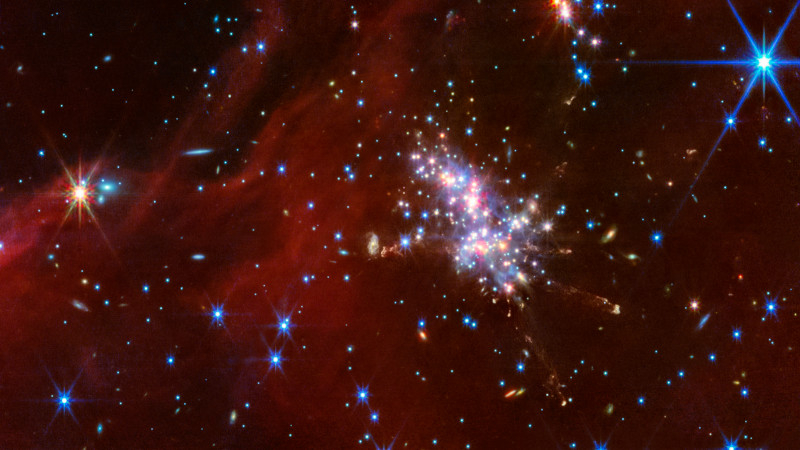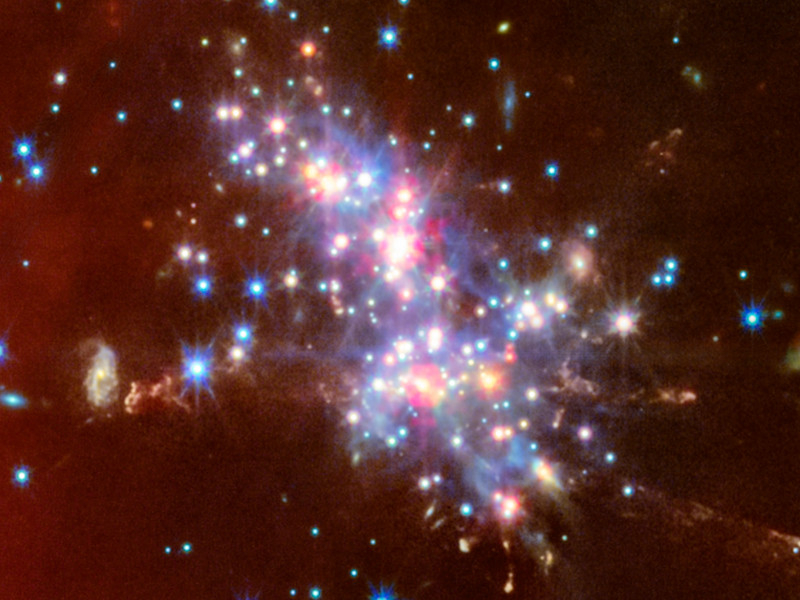NASA’s James Webb Space Telescope has conducted a detailed study of the outskirts of our galaxy. For the first time, detailed images of star clusters in the molecular clouds of Diegel 1 and 2 have been obtained, showing very young class zero stars in the very early stages of evolution, molecular flows and jets, as well as characteristic nebula structures.

Image source: M. Ressler (JPL) / NASA, ESA, CSA, STScI
The region of the galaxy being studied is located more than 58,000 light-years from the galactic center, more than twice the distance from Earth (26,000 light-years) to the center of the Milky Way. The telescope’s two key instruments were used for the observations: the near-infrared camera (NIRCam) and the mid-infrared camera (MIRI), which provided unprecedented detail in the images.
Although found within our galaxy, the Digel clouds are relatively poor in elements heavier than hydrogen and helium, making them similar to dwarf galaxies and our own Milky Way early in its formation. So the team took the opportunity to use the telescope to image activity occurring in four clusters of young stars in the Diegel clouds 1 and 2: 1A, 1B, 2N and 2S.
The most informative results were obtained when observing the Diegel cloud 2S, where the telescope detected an active cluster of young stars emitting extended jets along their poles. If earlier scientists assumed that a subcluster could exist inside the cloud, the capabilities of the telescope made it possible to confirm this. Mike Ressler, a scientist at NASA’s Jet Propulsion Laboratory (JPL) and second author of the study, said: “What fascinated and amazed me about the Webb data was that there were a lot of jets flying out of this star cluster in all directions. . It’s a bit like a fireworks show where you see everything going one way or the other.”

The image shows a dense cluster of background galaxies and red nebulous structures in the area. The colors in the image correspond to the different filters of the MIRI and NIRCam cameras
«In the past, we knew about these star-forming regions, but we could not study their properties. Webb’s data builds on what we have carefully collected over many years from other observations. With Webb we can get very powerful and impressive images of these clouds. In the case of the Digel 2 cloud, I did not expect to see such active star formation and impressive jets,” said Natsuko Izumi from Gifu University and the National Astronomical Observatory of Japan (NAOJ).
Scientists intend to continue studying star formation processes in these regions. Izumi emphasized the importance of combining data from different observatories and telescopes to analyze in detail each stage of the evolutionary process. Among the priority areas, the scientist noted the study of circumstellar disks in the outermost regions of the galaxy and the unresolved question of the reasons for the shorter lifetime of these structures compared to similar objects in nearby star-forming regions. She is particularly interested in the kinematics of the jets detected in the Diegel 2S cloud.
Webb’s images cover the outermost regions of the galaxy and the Diegel Cloud and are just the starting point for the team. They intend to re-examine this outpost of the Milky Way to find answers to a number of mysteries.